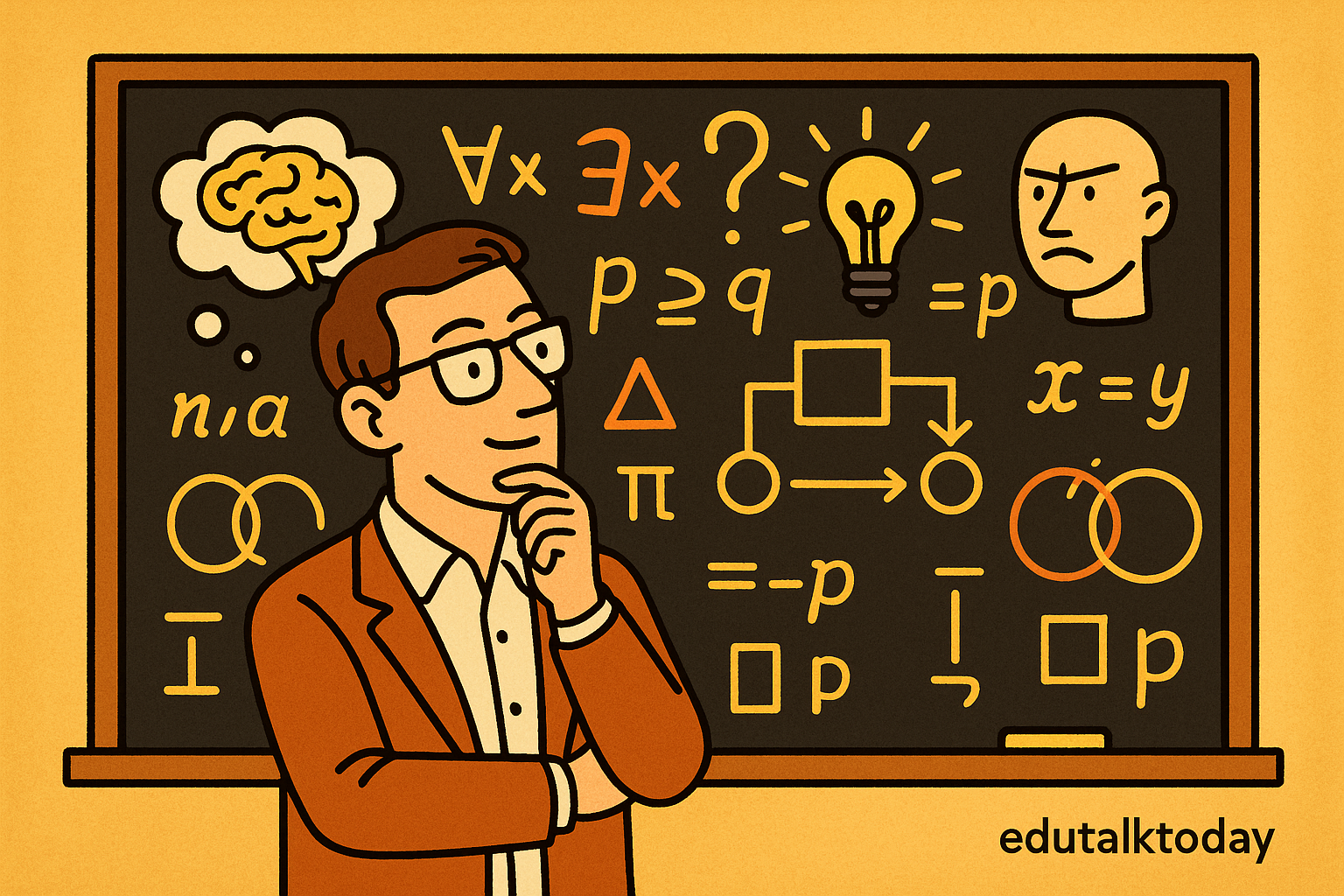Key Themes of Analytic Philosophy

We all know the familiar pitch: analytic philosophy is clear, rigorous, focused on language, allergic to metaphysics (well, mostly), and somehow still hanging out in the shadow of Frege and Russell. But here’s the thing—that framing’s gotten stale. Not wrong, necessarily, but reductive.
What I want to do here is sketch out some key themes of analytic philosophy that don’t always get the spotlight. Not just the canonical “language and logic” stuff, but the ways analytic philosophy has evolved, bent its own rules, and even contradicted itself at times.
I’m not aiming for a Greatest Hits summary—if you’re reading this, you’ve already got the classics down cold. Instead, I want to point out some surprising shifts and overlooked threads that might make us think twice about what “analytic” really means today. If it ever meant just one thing, which I’m starting to doubt more and more.
How the Center Shifted From Logic to Metaphysics and Back Again
Let’s start with a familiar arc: analytic philosophy begins with logic and language, then makes a cautious return to metaphysics, but under new terms. That’s the version we all learned. But what’s interesting—at least to me—is how that story isn’t just about changing topics. It’s about changing assumptions about what counts as philosophical work.
Take Frege. His context principle (“Never ask for the meaning of a word in isolation, but only in the context of a proposition”) sounds like a call to clarity. But baked into that is a deep commitment to structural analysis—that meaning and thought are built up systematically, and that language is a window into thought.
Now skip ahead to Carnap. Carnap famously distinguishes between internal and external questions—“Are there numbers?” is meaningful inside the mathematical framework but meaningless outside of it. For Carnap, ontology is basically a bookkeeping exercise: you just choose your framework, and the commitments follow.
What’s fascinating is that Quine’s critique of Carnap—especially his rejection of the analytic-synthetic distinction—didn’t kill metaphysics. It gave it new life. Quine wanted to naturalize epistemology, sure, but his holistic view of knowledge opened the door for asking ontological questions again, just under a different banner: what exists, according to our best scientific theories?
And then things got weird.
Enter Kripke, with his necessary a posteriori truths and rigid designators. Suddenly, you could talk seriously about essential properties again—only now, it wasn’t Aristotelian fluff. It had the imprimatur of modal logic. When Kripke says that “Water is H2O” is necessarily true but known a posteriori, he’s not just playing language games—he’s redefining how we think about metaphysics inside the analytic tradition.
Then you get David Lewis, who turns modal realism into a full-fledged theory. That’s not just metaphysics—it’s brave metaphysics. And yet, it’s all done with the same analytic tools: formal clarity, logical argumentation, and a healthy disregard for anything that smells like continental hand-waving.
What’s ironic is that early analytic philosophy was supposed to replace metaphysics with logic. But what happened instead is that logic became the scaffolding for new metaphysical systems. So now you’ve got people like Ted Sider using formal tools to argue for a metaphysics of structure, or Amie Thomasson flipping the script with her “easy ontology” that blends Carnap with ordinary language philosophy.
That tells us something crucial: analytic philosophy hasn’t just survived the 20th century—it’s mutated. It can contain both Kripkean essentialism and Wittgensteinian quietism, and still think of itself as one tradition. And that makes it way more interesting than the textbook summaries.
One more example before we move on: meta-ontology. Just a decade or two ago, nobody was talking about what it means to do ontology. But now we’ve got serious debates—Sider vs. Thomasson vs. Hirsch—over whether questions like “Do composite objects exist?” are substantive, linguistic, or just confused. This isn’t just a shift in topics—it’s a shift in how analytic philosophy sees its own job.
So yeah, maybe the center didn’t hold. But maybe it wasn’t supposed to. Analytic philosophy started with a strict sense of what counts as philosophical progress, and now we’ve got a bunch of competing answers. That doesn’t mean we’re off-track. It means we’re asking better questions—ones that might’ve made even Carnap raise an eyebrow.
Six Big Themes That Still Shape Analytic Philosophy
Okay, now that we’ve traced how analytic philosophy evolved beyond its early boundaries, let’s zoom in and talk about what actually holds the tradition together today—if anything does. Below are six themes or tensions I think are still doing a lot of heavy lifting. These aren’t just historical motifs; they’re live issues, shaping current debates and showing up in everything from epistemology to ethics to the metaphysics of science.
Some of these will be familiar, but I’m betting at least a few will feel a bit different when you put them next to each other like this.
1. Semantic Externalism Blew Up More Than We Expected
When Putnam introduced semantic externalism—“meaning ain’t in the head”—it felt like a technical move in the philosophy of language. But the fallout has been massive.
If meanings are partially determined by external factors (like the social environment or causal histories), then the idea of privileged first-person access takes a serious hit. This reverberates not just in philosophy of mind, but also in epistemology: What kind of warrant do I really have if I can’t even fully access what I mean?
Tyler Burge’s social externalism complicates it further: your community partly fixes your concepts. That pulls in normativity and makes it harder to maintain the sharp fact/value split analytic philosophy traditionally leaned on.
2. The Normativity Problem Refuses to Go Away
Here’s the tension: We want a naturalistic picture of human cognition, but we also need normative standards to make sense of rationality—what should I believe, infer, or desire?
Davidson tried to thread the needle, but Brandom makes it unavoidable. If concepts are essentially normative—defined by their role in inferential practices—then we’ve got to account for normativity as a real feature of our practices. But how do you naturalize that without making it trivial?
This is still a huge sticking point in contemporary epistemology. Can there be a science of normativity? Or is that a category mistake? The fact that the “ought” keeps showing up in our “is” questions tells me this isn’t just semantics—it’s an existential design flaw in the analytic project.
3. The Rule-Following Problem Still Haunts Us
Kripke’s reading of Wittgenstein (whatever you think of it) crystallized a core anxiety: how do we account for meaning without falling into infinite regress or brute stipulation?
The idea that there’s no fact of the matter about what rule I was following—unless embedded in a practice—was meant to be devastating. And honestly, it still is. Even in contemporary discussions about AI, computation, and mental representation, you’ll see echoes of the rule-following problem.
If we can’t explain how we follow rules in a way that’s both meaningful and non-mysterious, then the whole analytic hope of building a rational, inferentially transparent philosophy starts to wobble.
4. Deflationism Isn’t As Innocent As It Sounds
Truth minimalists like Horwich argue that truth is just a device of generalization: “P” is true iff P. Sounds clean. Sounds harmless. But what happens to philosophical inquiry if truth is just a logical convenience?
You’ll see deflationism pop up all over—about meaning, about reference, even about moral facts. But here’s the tension: if we deflate too much, we’re left without any traction. Without substantive theories of meaning, truth, or justification, it’s hard to see how philosophy can offer more than commentary.
At some point, you have to bite the bullet—either inflate something (concepts, properties, norms), or explain why nothing needs inflating. But deflationism as a global strategy always flirts with philosophical nihilism, even if it’s dressed in rigor.
5. Conceptual Engineering Is Taking Over (And That’s Weird)
I’m honestly fascinated by this one. Conceptual engineering—rethinking our concepts to make them more useful—is exploding right now. It’s not just a trend; it’s a serious reconception of the philosophical method.
People like Herman Cappelen and David Chalmers are pushing the idea that philosophy isn’t about discovering what we mean; it’s about deciding what we should mean. That flips the script from descriptive analysis to prescriptive revision.
But this raises deep issues: Who gets to revise the concepts? And what counts as “better”? This shift could radically change how we do moral philosophy, philosophy of race, even logic.
It’s bold—but it might also be a quiet surrender of analytic philosophy’s original promise: to describe the conceptual terrain, not redesign it.
6. Disunity Might Actually Be a Strength
Here’s my hot take: analytic philosophy doesn’t need a unifying essence anymore. The tradition is more like a federation now—a set of overlapping practices, styles, and toolkits. And that’s probably a good thing.
When you can have someone like Timothy Williamson defending knowledge-first epistemology while Sally Haslanger is redefining gender through social metaphysics, and both are “analytic,” that tells you something.
The more I think about it, the more I believe that analytic philosophy’s identity crisis is actually a sign of health. It means we’re questioning the foundations while still doing the work.
Analytic Philosophy Gets Weird (And That’s Good News)
Let’s talk about something we don’t always acknowledge in our syllabi: analytic philosophy is getting weirder, more self-aware, and maybe even more pluralist than it’s ever been. And I think that’s actually a sign of maturity.
Metaphilosophy Is Now the Real Battleground
We used to hide the metaphilosophical stuff in the footnotes. Now it’s front and center. Think about Timothy Williamson’s The Philosophy of Philosophy or the entire literature around experimental philosophy. Suddenly, the question isn’t just what should we believe?—it’s what is philosophy even trying to do?
Some argue for philosophy as conceptual analysis. Others see it as normative theorizing. And a growing number treat it like a kind of conceptual R&D lab—not just clarifying but constructing tools for thought.
This is where you start to see tension between people like Williamson (who insists on objectivity and realism) and others like Haslanger or Thomasson, who are more willing to say, “Look, concepts are social tools. Let’s change them.”
Quietism Is a Live Option Again
Remember when metaphysical quietism felt like a dead-end? Now it’s back. John McDowell, in particular, has helped revive the idea that not all philosophical questions need answers in the form of theories. Sometimes the problem is the question itself.
This is anti-systematic philosophy that still counts as “analytic.” It’s cautious, subtle, deeply influenced by Wittgenstein, and yet it’s not hand-wavy or obscure.
Quietism’s return suggests that analytic philosophy is willing to admit some of its own limits, which is something you rarely saw in the early days.
Modal Logic and Metaphysical Ambition Are Alive and Well
Even with all this pluralism, there’s still a core analytic ambition alive in folks like Sider, Chalmers, and others: to map the “structure of reality” in a deep, principled way.
Sider’s talk of “structure” as a metaphysical primitive is bold. So is Chalmers’ use of 2D semantics to tackle problems of consciousness and possibility. These are projects that go way beyond linguistic clarity—they’re metaphysics with a capital M.
The fact that these projects coexist with quietism and conceptual engineering shows just how elastic the tradition has become.
Analytic Tools in New Terrains: Theology, Race, and More
Here’s something I didn’t see coming ten years ago: analytic philosophy branching out into areas like theology, social theory, and race, and doing so with real nuance.
Analytic theology is using modal logic to reframe classical doctrines. Analytic metaphysics of race and gender (Haslanger, Ásta, and others) are using the same conceptual rigor we once applied to sets and properties—but now aimed at deeply normative, socially embedded concepts.
This isn’t dilution—it’s expansion. It’s what happens when a tradition trusts its tools enough to use them in unfamiliar territory.
So Where Are We Now?
If you were to describe analytic philosophy today, you’d have to say something like: a style of doing philosophy that values clarity, argument, and precision—but doesn’t insist on any particular topic, method, or ontology.
In other words, we’ve gone from a movement to a mood. And that might be the best thing that’s happened to us.
Final Thoughts
If there’s a takeaway here, it’s this: analytic philosophy has stopped pretending to be a single unified project—and that’s good.
What we’ve got now is more like a toolkit than a doctrine. The tools are precise, rigorous, and surprisingly adaptable. We’re using them not just to clarify puzzles but to rethink what puzzles matter in the first place. That’s a sign of growth, not decay.
So no, there’s no tidy essence to analytic philosophy anymore. But maybe there never was. And maybe that’s exactly what keeps it alive.





